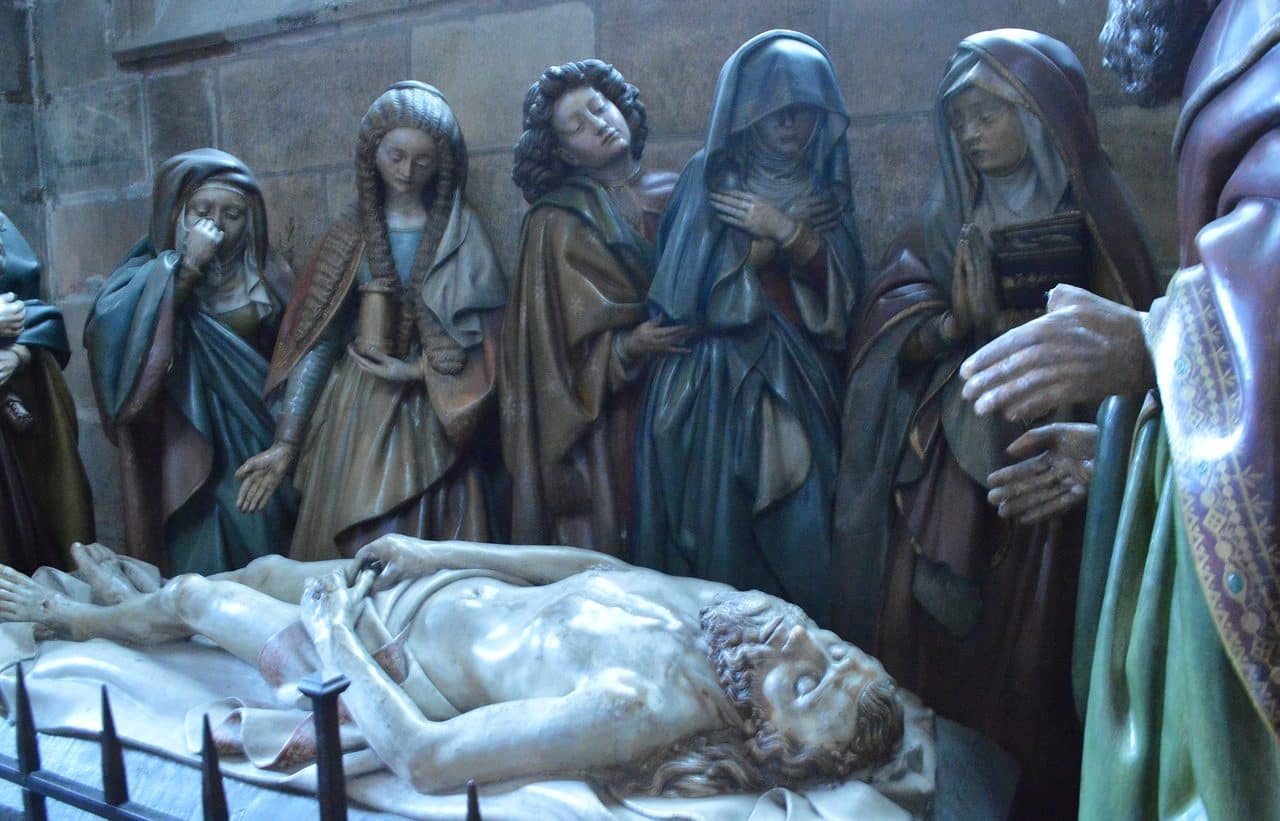
The shroud is the cloth used to cover the body of a deceased.
Shroud is a term that comes from the Latin word sudarĭum . The concept refers to the cloth that is used to cover the body or face of a dead person . In ancient times, this canvas was considered a manifestation of respect towards the deceased individual.
A cloth found in a church in the Italian city of the same name is known as the Holy Shroud of Turin and displays the image of a person's face with the marks that characterize the crucifixion . There are those who maintain that the image engraved on the canvas belongs to Jesus Christ .
According to this position, the Holy Shroud would be the cloth that covered the corpse of Jesus Christ after being crucified. By the work of a miracle , his face was fixed in the cloth and remained unchanged despite the passage of time.
It is important to note that the Catholic Church does not officially recognize the legitimacy of the Holy Shroud , although it accepts its devotion. Various scientific studies, on the other hand, maintain that the Holy Shroud would have been created after the 13th century , a date that places it very far from the time in which Jesus Christ would have lived.
Characteristics of the Holy Shroud
Other names given to the Shroud of Turin are Shroud and Shroud . Located in the Cathedral of San Juan Bautista , it is a canvas measuring 1.13 by 4.36 meters. As mentioned above, this shroud has gone through various studies that sought to prove its legitimacy, something that has not yet been achieved; In fact, most of them have rather pointed to the opposite idea.
Only in 1898 did the most exhaustive analyzes of the canvas begin, by an Italian photographer named Secondo Pia , who after capturing the shroud several times noticed in his negatives that the image of the body could be seen more clearly. Almost a century later came authorization from the Holy See to date the sheet ; The process was carried out in several laboratories, and all agreed that it could not come from a date prior to the year 1260 .
For those who believe that the Holy Shroud was truly miraculously printed with the features of Jesus , the lack of evidence of its existence prior to the 14th century is not at all gratifying. Starting from this absence of data that allows us to effectively spin the story to demonstrate that we are indeed dealing with a sacred element, some scholars have chosen to change the perspective of their research.

The Holy Shroud is called the one that, according to believers, was used to cover Jesus Christ after his death.
Other fabrics of religious interest
Ian Wilson , a well-known historian, focused his attention on the Image of Edessa , also known as Mandylion , a piece of cloth on which it is believed that the face of Jesus was printed, since the evidence of its existence predates that of the shroud. This rectangular or square-shaped cloth, depending on the source, can be seen in documents dating from the 6th century , something that brings it some seven hundred years closer to the death of Jesus than the data expressly corresponding to the Holy Shroud.
Going a little deeper into the position of the Catholic Church , Pope Pius XII authorized in 1958 the use of the Holy Shroud as an image for devotion by the faithful to the Holy Face of Christ .
In the Cathedral of Oviedo there is also a cloth that is mentioned as the Holy Shroud . Made of linen, this shroud presents burns that would have been made with candles and shows blood stains. It is said that the Holy Shroud of Oviedo would also have covered the body of Jesus Christ , and that it was collected from his tomb next to the aforementioned Holy Shroud of Turin .
